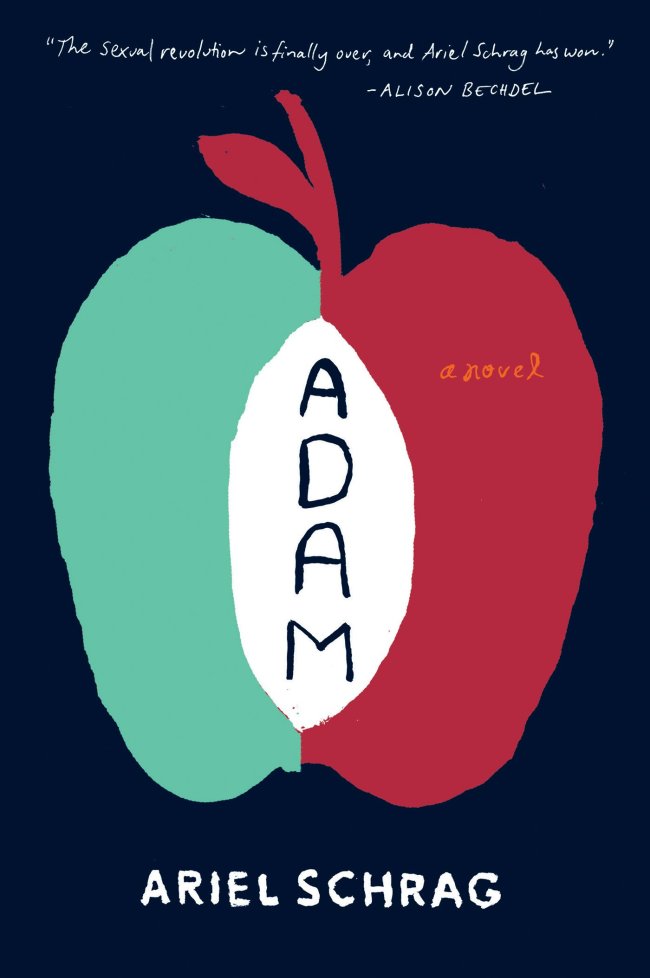
By Ariel Schrag
(Mariner)
In Ariel Schrag’s audacious coming-of-age novel “Adam,” an inexperienced teenage boy falls in love with a lesbian and tricks her into believing he’s transgender so she’ll go out with him. Yes, I know: So many things could have gone wrong with this premise. The sheer number of potential missteps is enough to daunt any novelist, let alone a first-timer like Schrag.
But Schrag, best known for her series of graphic memoirs about her adolescence, has found compassionate and funny ways to talk about a subject most fiction avoids, and she has produced a truly original (and sexually explicit) coming-of-age novel. By taking a straight, white, male protagonist who takes his gender for granted and throwing him headfirst into an unfamiliar, exotic subculture, she not only turns him from callow boy to enlightened youth but also offers a wide audience a chance to join the discussion.
Make no mistake, though: Adam is primarily a comic novel. As the book opens, Adam is a perpetually aroused, awkward high school junior in Piedmont, California, smarting from a series of humiliations. When he sets off to spend the summer with his college student sister Casey and her roommates in Brooklyn, he has vague hopes of hooking up with an older girl. Although Casey is a lesbian and so are most of her friends, he dares to dream anyway.
But life in Bushwick is more confusing than Adam expects. Casey, who has always liked masculine women, is interested in someone she refers to as Boy Casey. At first Adam thinks Boy Casey is a girl, then a guy, then realizes halfway through an “L Word” party that Boy Casey and many of the others at the gathering “weren’t hermaphrodites ― they were girls who wanted to be guys. And somehow this was possible. ... Boy Casey wasn’t a boy; he was a girl who became a boy.”
Adam’s a little stunned at the sexual revelations and terminology being tossed around. What does genderqueer mean? Why are some people referred to as “ze” instead of “he” or “she”? Then, at a party, he meets Gillian, who’s definitely female. And older. And attractive. And seems to like him. And ― wait ― she’s a lesbian. He realizes she thinks he’s transgender. Why else would he be hanging around lesbians all the time?
Thus begins a mad scramble, as Adam desperately employs drastic measures to keep their budding romance alive (thank you, Ace bandage). Schrag has great fun putting the kid through his paces as he stumbles from party to sex club to Camp Trans (look it up). Her sly setup works both ways, too: Gillian is brashly sure she’d never be attracted to a straight guy, yet she is. If ever there were a novel celebrating the accuracy of the Kinsey scale, “Adam” is it.
You know Adam can’t keep his secret forever, but the fun comes not from how the truth will be revealed but how he grows and changes by immersing himself in the gender debate. Sometimes the dialogue feels a little bit artificial, as if Schrag’s trying to explain things to an unenlightened audience instead of just letting her characters talk. But she’s respectful while still seeing the humor in them all, whether they’re gay, straight, transgender or cisgender. And if you have to Google the definition of that last word, all the better. “Adam” is educational in the best sense of the word: Much of its audience will be as dazed and confused as Adam is in this brave new world, but Schrag sends you home with a greater understanding of all the permutations of what it means to be human. (MCT)
-
Articles by Korea Herald




![[Herald Interview] 'Amid aging population, Korea to invite more young professionals from overseas'](http://res.heraldm.com/phpwas/restmb_idxmake.php?idx=644&simg=/content/image/2024/04/24/20240424050844_0.jpg&u=20240424200058)













![[KH Explains] Korean shipbuilding stocks rally: Real growth or bubble?](http://res.heraldm.com/phpwas/restmb_idxmake.php?idx=652&simg=/content/image/2024/04/25/20240425050656_0.jpg&u=)

